Dearest Gardening-Nature-Wood-burning-stove Friends!
I haven't posted a lot in #Hivegarden over recent months - partly because I am so immersed in putting my house in order for selling (in spring), and my works in the gardens being so sporadic...
This project stood out, however, and I really want to share both a visual post, and will follow it up with a podcast going into the technicalities of cutting wood and into the mystical communing-with-tree-spirit, more. 😇
The context of the tree is pretty amazing: from my side of the water - over to the top right of the very top photo on this post - I could see it growing very high: it must've been around 8-10 metres when it was in full stretch - and I had commented to someone literally days before, that it was getting a bit full and taking over the waterfall - i.e. I couldn't actually see the water any more, from my balconies.
I'll go into how I came across the tree actually fallen, in my upcoming podcast, but suffice to say, having seen it from above, I was unsure how possible it was going to be to even access it: there are few places up and down the waterfall where you can enter from the lower-wall side, and I was not about to risk my life - even for a winter's worth of firewood!
I started through the neighbour-below's gardens: he never visits, never cleans his garden, and the area at the edge around the wall was seriously jungley:
I started (without documenting!) my adventure into the brash, by cutting away a shedload of vitalba/ Old Man's Beard - at least this is the closest I can identify this ubiquitous creeper - we also call it 'Tarzan vines' for its notorious strength and vigour - hahaha! It was a good few hours' work, just to get to the wall.
Then I had to manoeuvre the ladders down - two of them - both big old and heavy. On one side, above...
And one on the other side - these are both taken when the work was well in progress: I didn't get any photos of the tree before I began working on it, but I did make a significant assessment of the tree and how to go about taking it apart, before the work began. I also had to clear a lot of the brash/ jungle which was along the wall - and a lot of stuff that was crashed-onto by the foliage of the willow - it wasn't really photographable from inside the process!
Assessing what the willow was doing, was an incredible process!
As you can see above and below, the root mass was not a conventional tree root structure AT ALL: it was a solid, thick, deep matting of tiny roots packed tightly together and without any visible taproot or stabilising roots!
I was in awe of this, but at the same time, could see clearly why it had fallen literally flat on its back in the place where it had been growing.
I honed in finally on a couple of tiny 'bigger' roots which evidently were all that had been securing it (!)
As you see here: the big thick mass of around 20 trunks - varying in size from around 30 to 60 cm in circumference - were growing straight up out of this matting. I should note here, that the Ratello waterway is just a trickle in these photos, but during storms, it becomes a raging torrent, and the willow was almost directly in the centre of the waterfall. Drama!
The form of the stonework which it had been loosely clinging to, was quite clearly visible still in the root mass.
And the branches above this root mass had these rooty-shoots from them (photo below), which were obviously helping the tree to drink from the water-born air splashing down.... Such a potent illustration of how a tree spirit like this can adapt to its situation - in fact, the tree was already putting out new leafy shoots from all limbs; clearly intent on continuing its powerful growth, uninhibited about the fact it was laying on its side!
All in all, getting a close-up overview of the tree, and of what it needed, in the context of the waterway, and our collective needs and future harmony - I felt close to the tree, which I felt guiding me to take what I need, tidy up the area (from natural and human-discarded ditritus), liberate other useful fruit and nut trees around it, and generally prepare it for a new growth cycle, in a way that it would not be damming the river or causing problems later on for the free-flowing of the water.
So once I'd got a general overwview, I could begin at the edges of the tree, clearing the wall (which was still VERY overgrown) so that I could actually get to the ends of the willow.
I made a solid start the first day: managing to harvest various ends of trees, some fig trunks and branches, and beginning to take out the long trunks from the willow.
I love working quietly, slowly, organically and in a feminine way - just listening, observing, and making one slow cut at a time... At this point, whilst up on the wall, I felt several bees buzzing about me: not aggravated YET but concerned... So I stepped away, watched where they were coming and going, and waited until they had settled again: there didn't immediately appear to be a hive, but I was aware of them and didn't overwork in that area...
In the meantime, the willow beams piled up...
And the thinner sticks...
And the twiggy bits and willow withies: I started to get excited about baskets at this point, too!
My beautiful new friend turned up to help too!! It was AMAZING to have company, support, and someone else who is similarly in awe of nature and of this amazing corner which we were guardian-ing together. It is so wonderful to have another natural woman to do natural work with - very different from the buzzing chainsaws we could here just nearby, with the men gathering their winter wood stores...
From here, I probably can't get the photos in chronological order so much, as we were very immersed in the work symbiotically: it was hard work, with a lot of sawing effort - green wood is very sticky, and the willow in particular was not just the usual willow-wet, but actually still laying in the waterway, and so super soaked.
Again, having company in this magical space was really glorious: we sat to the side of the tree and ate pilfered grapes and a lovely herbal tea that I'd made from nettles, roses, sage and lavender.
We wandered about on this one level of the waterfall where we could wander: this is looking down the cascade to the lower levels; it doesn't look like it, but just in front of my floral wellies, there is a 3 metre drop to the next level. We had to be very careful as we untangled the branches and undergrowth, not to mis-step.
In such a space like this, the wildlife is prolific. As we sat quietly, and even as we worked, the butterflies, birds, bees, cats and other local animals came pottering by to see us.
Spot the dog, above? Miele-Zampa-Dinga (she has 3 names from all the folks who know her in different contexts, so I call her all three) was a bit perplexed by what we were doing rummaging about in the undergrowth, and didn't stay long. She prefers inanimate and solid things underpaw.
Above you can see the form of the tree once we had the tips cut from the branches, and a few of the trunks removed.
And here you can see just a small portion of the massive sack of plastics, glass, metal and fabrics which we pulled out from the trees: unfortunately, despite having this incredible ancient form and a potentially powerfully enriching feature of beauty in their old town, and even though there is a door-to-door recycling pickup every day of the week, folks locally still think it is acceptable to throw all their crap out of sight and out of mind - down the Ratello. This makes the whole area really ugly and abandoned-looking, instead of rustic and charming or naturally and beautifully returned to nature.
We did our best to clear up what we could.
As we got to the lower-laying branches, they were harder to saw.. but we got into a rhythm and flow, and I helped mentor my friend a little in the mastery of sawing. Until one gets a wee bit of mastery, it is easy to be hacking away very inefficiently at a piece of wood, wasting a lot of energy and getting a sore back. But a few tweaks in how we approach it, can make an immense difference.
We made some holistic decisions about how to leave the tree to its best advantage, whilst clearing and cleaning around it to not leave a big mess in which the different plants and trees would be overwhelmed - or die. It was deeply satisfying to work in this way, and to leave the tree with the way open, as it were, for it to hopefully re-flourish.
At the end of the job of cutting the willow, I also made a big effort to clean right along the wall as far as I could, as you see in the above 2 photos. As I was clearing carefully the last of the bindweeds and brambles, I again noticed bees buzzing around a little more busily - and as I pulled the last vine away gently - saw that in fact they did have a mega nest in there! I suppose I was expecting them to swarm or be aggressive, but because we were genuinely working lovingly and for the benefit of the Whole, they simply were reminding us where to stop. I stopped just before uncovering this deadened hazelnut tree trunk, which the bees had made a multi-storey luxury hotel in!
I left them be/ bee, and moved back to the finishing up of the tree cutting. We elected to leave a good section of the wood from the upper branches on the original root mass, so that it can regrow in a solid way: plenty of wood to grow from, but not too much that it will take over the whole waterway.
We cleared a lot of the twig brash too, which you can see in the above photo: a lot of the twigs were no longer living, as the tree was already actively adapting to a new growth stage. So we snapped and trimmed a lot of them off, so that the tree wouldn't waste any energy trying to keep all of them alive: so it can concentrate on a new strength of growth.
These are the final images of the space; I'll possibly add an update, showing the wood in my cantina - but it is a huge job to cut each beam again in half, and then carry them up the very steep steps to the via above!
It already rained heavily again, too - so a lot of the sprackly bits that we left around, have been washed downhill.
I hope you enjoyed this post! Do Upvote and Share if you did! And join my new podcast on Castgarden, where I'll be sharing how I felt guided to and during the work with this tree...
Huge love to you all in your gardens!
www.claregaiasophia.com

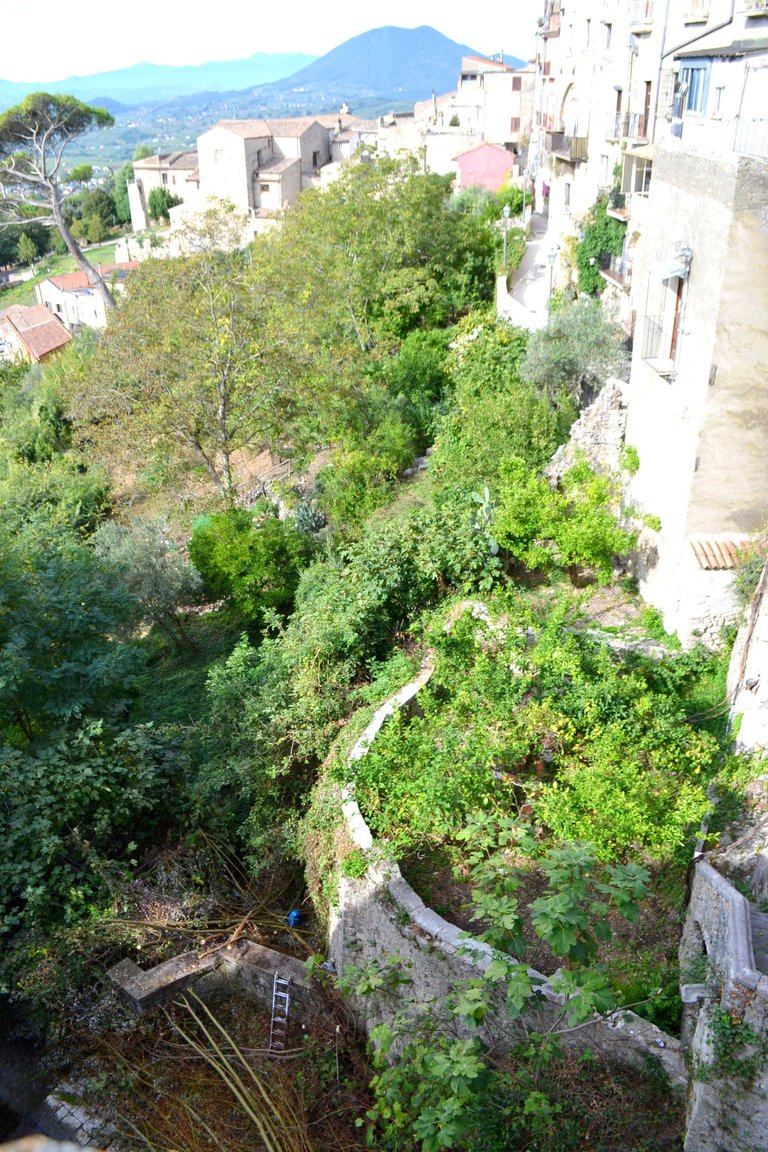
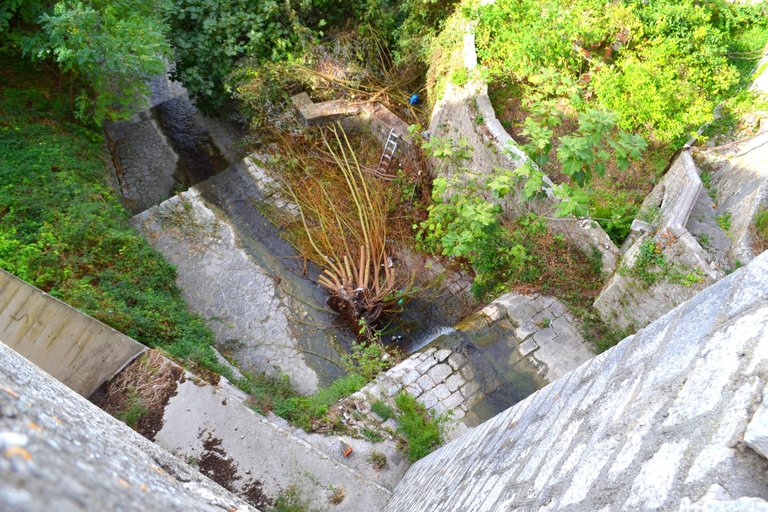
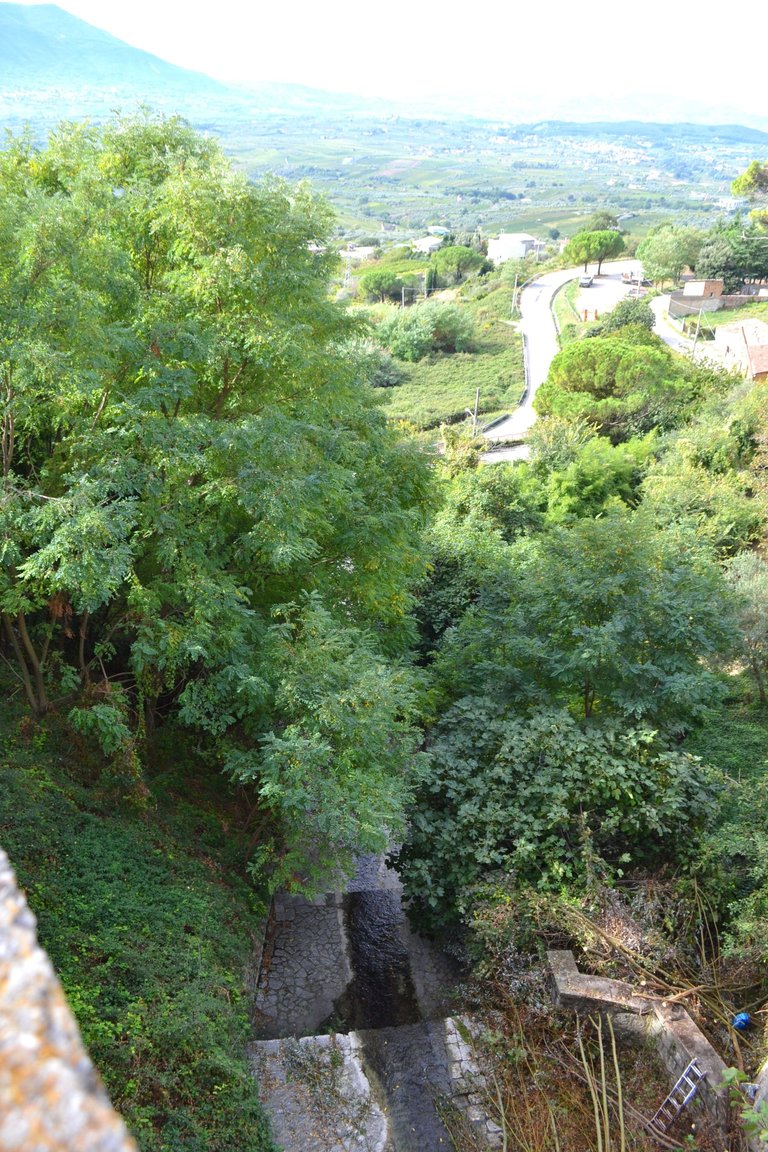
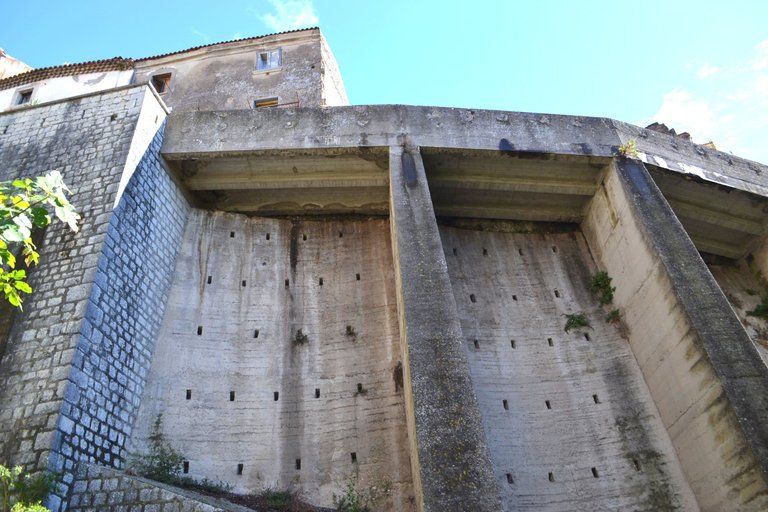
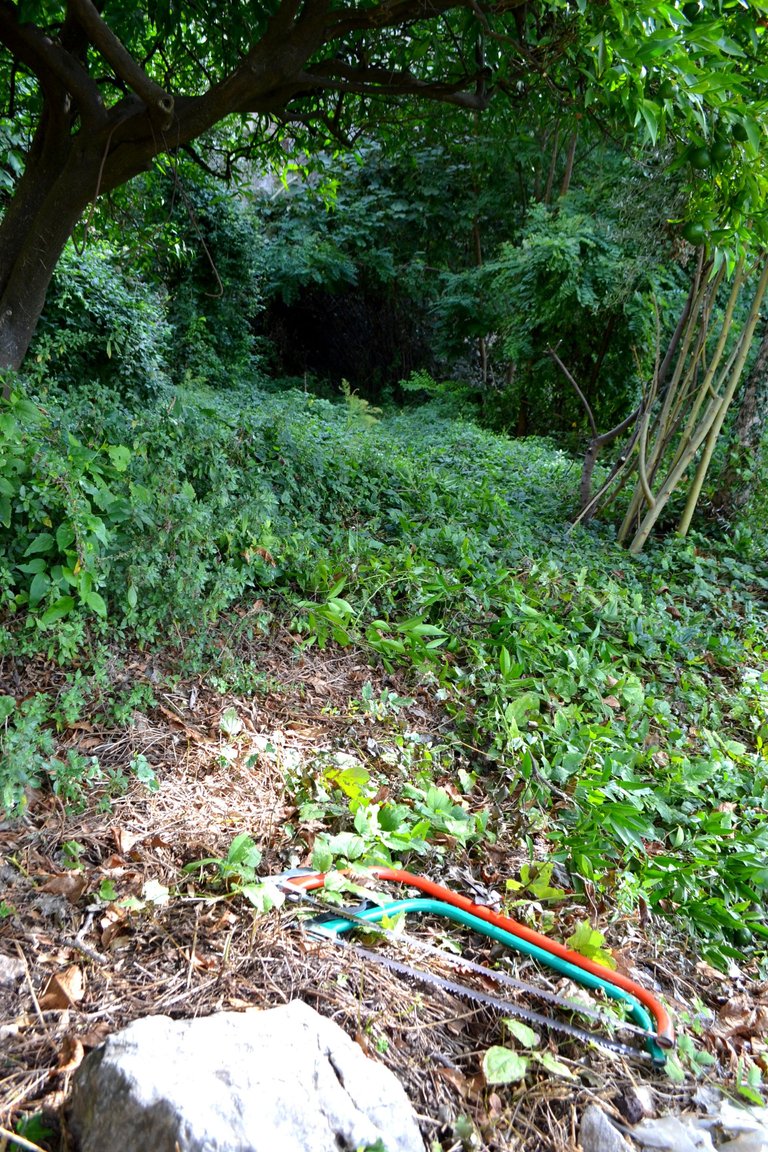

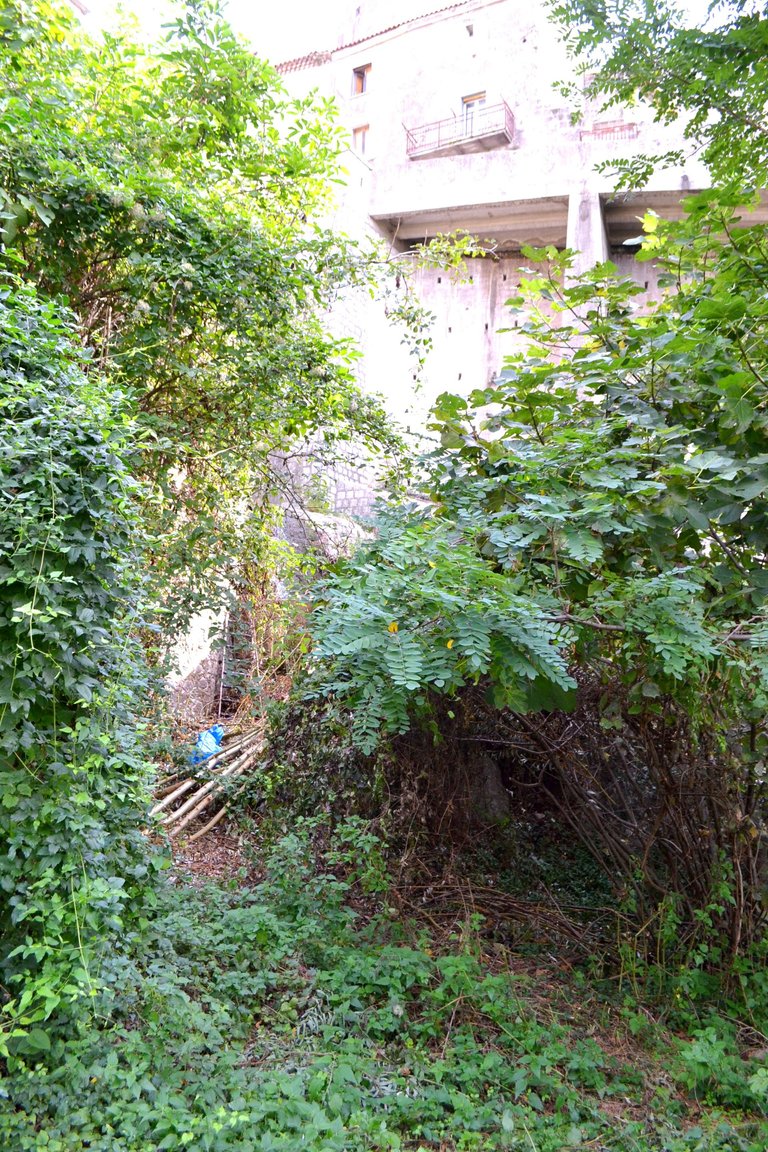
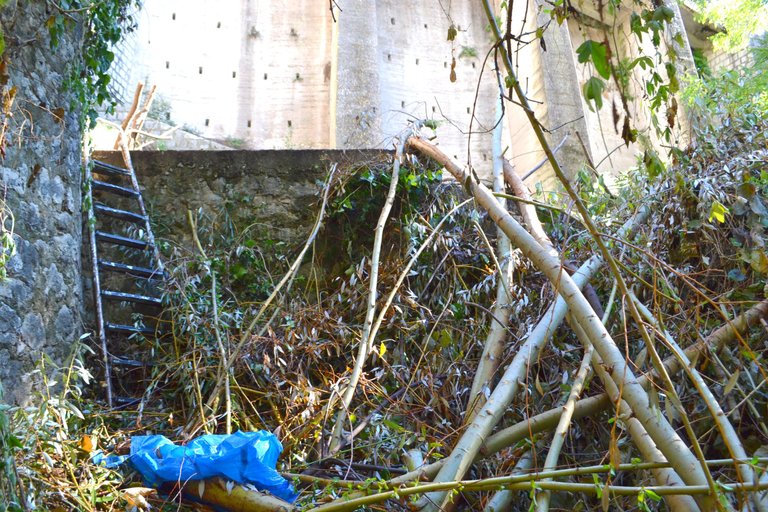
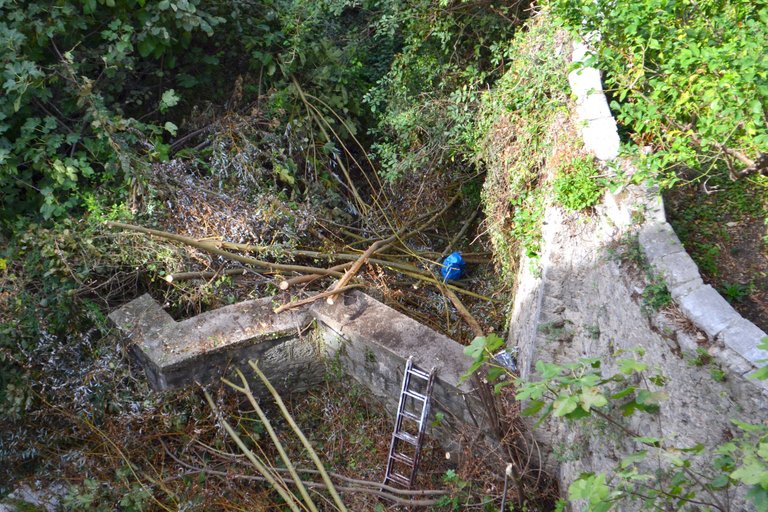


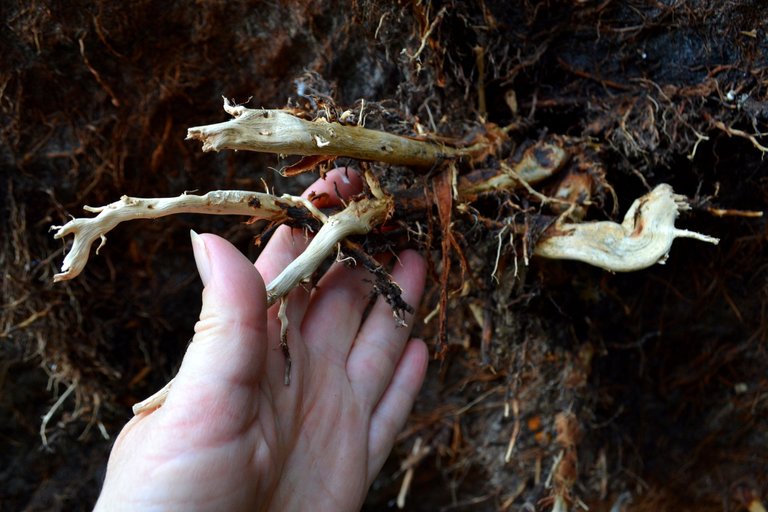
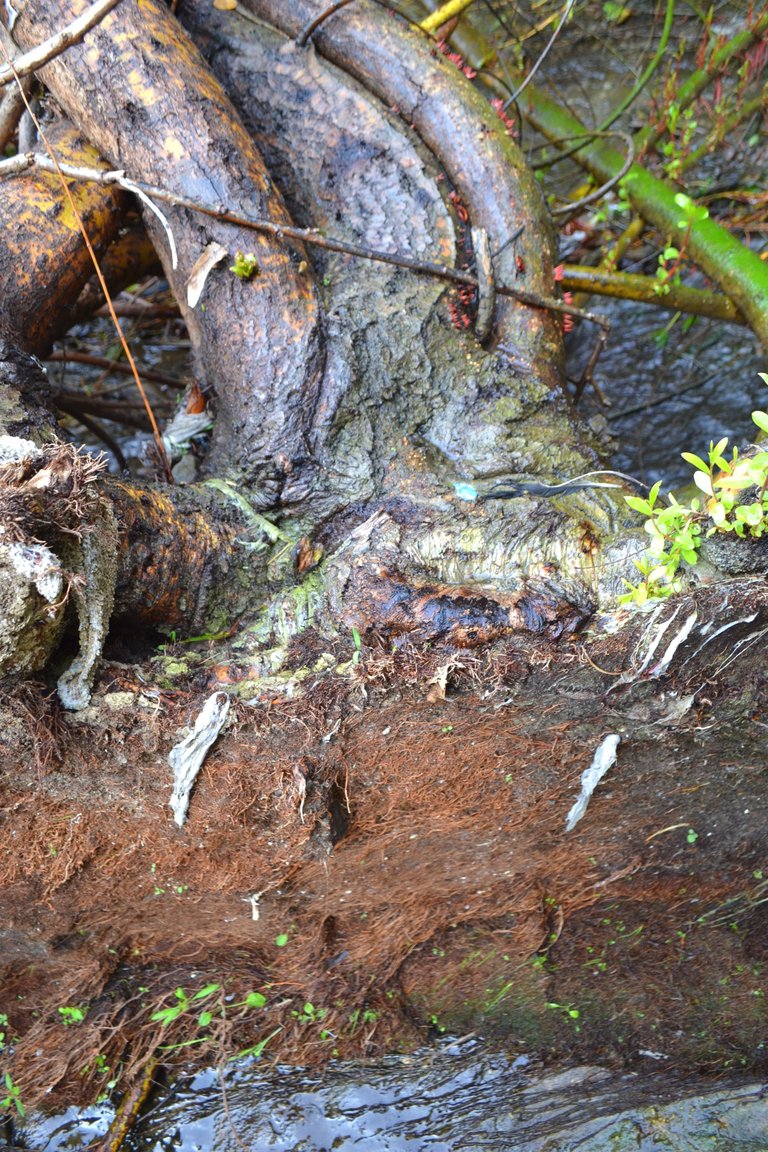
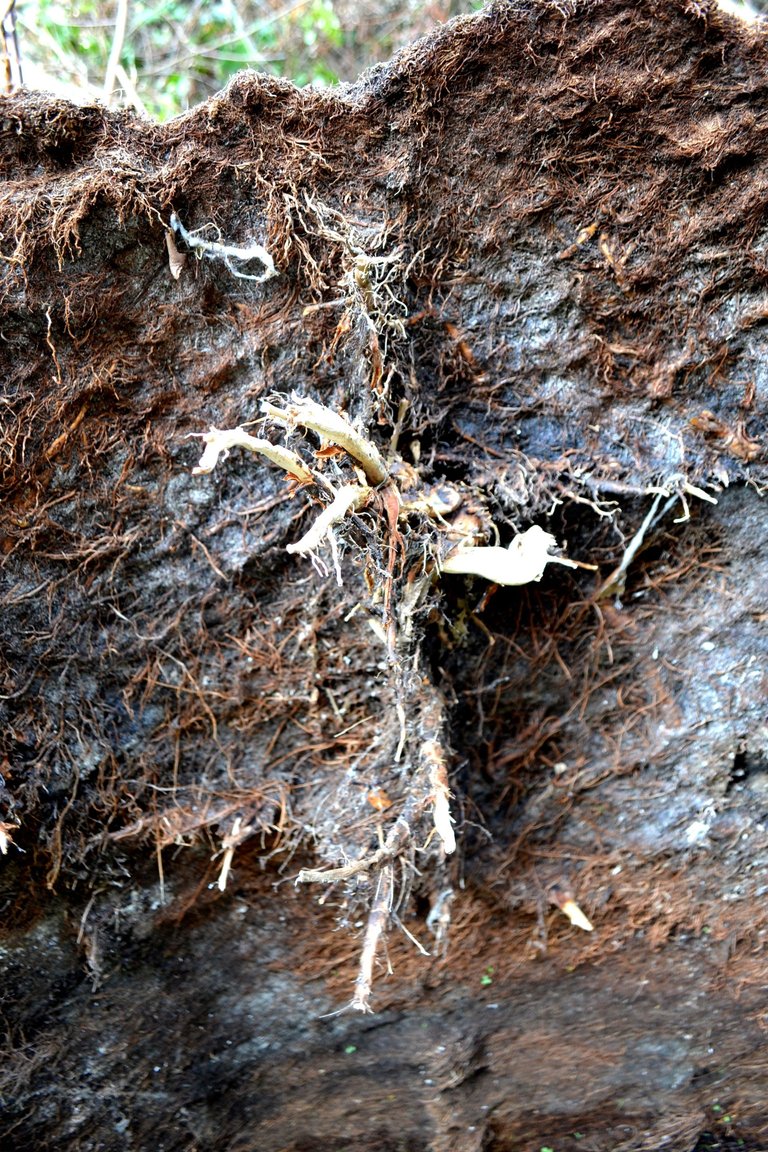
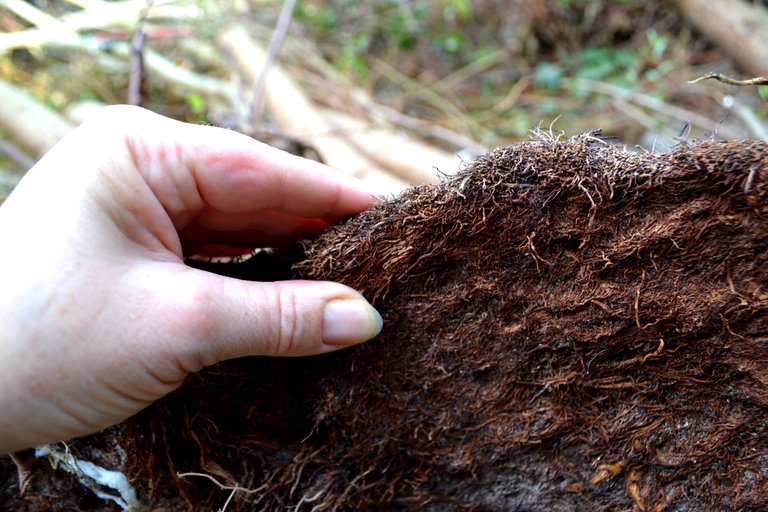

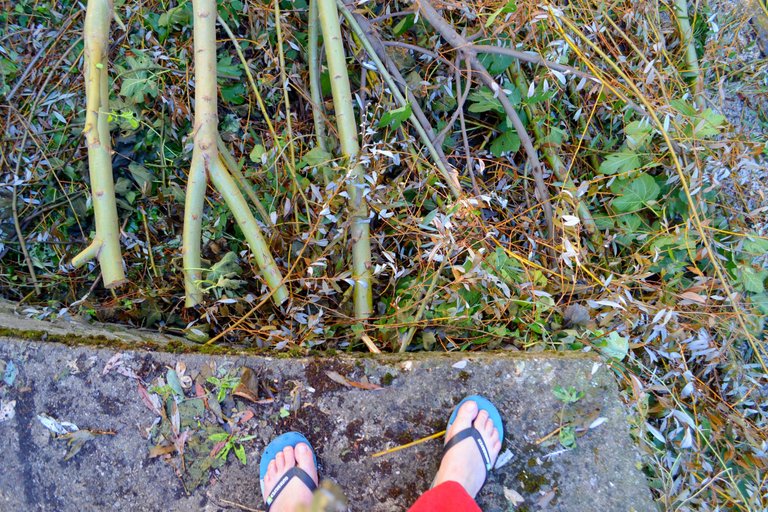
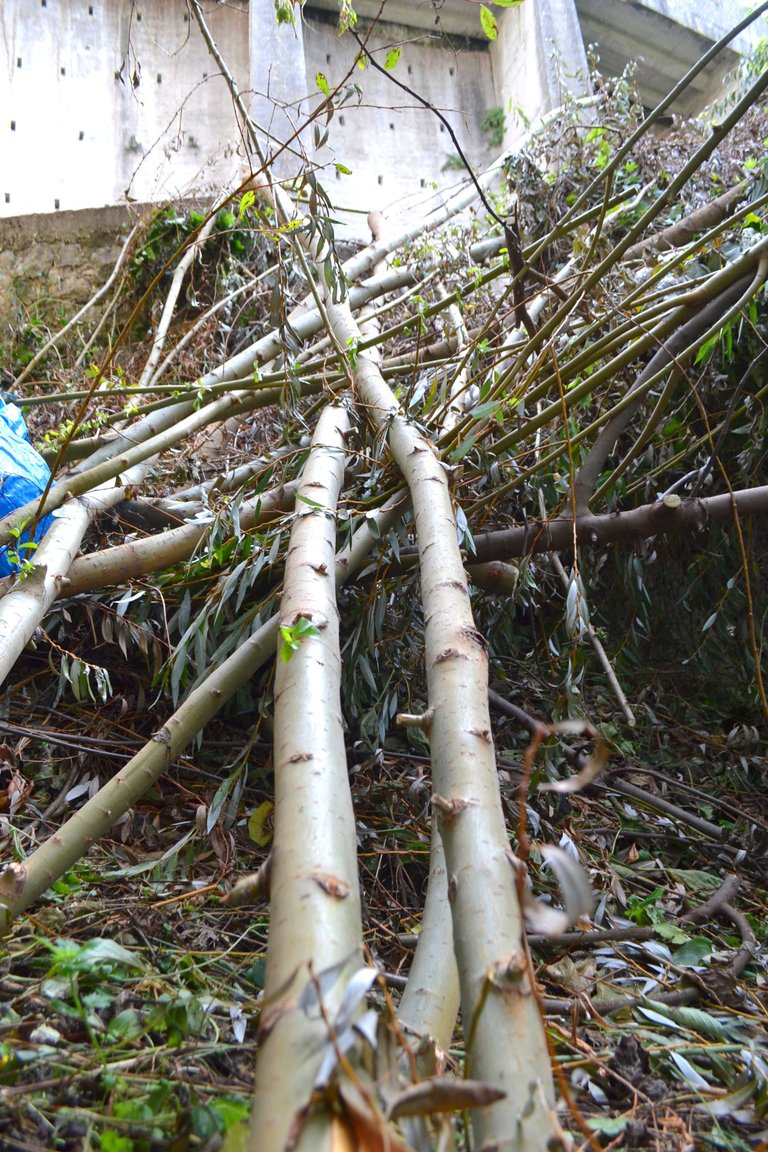
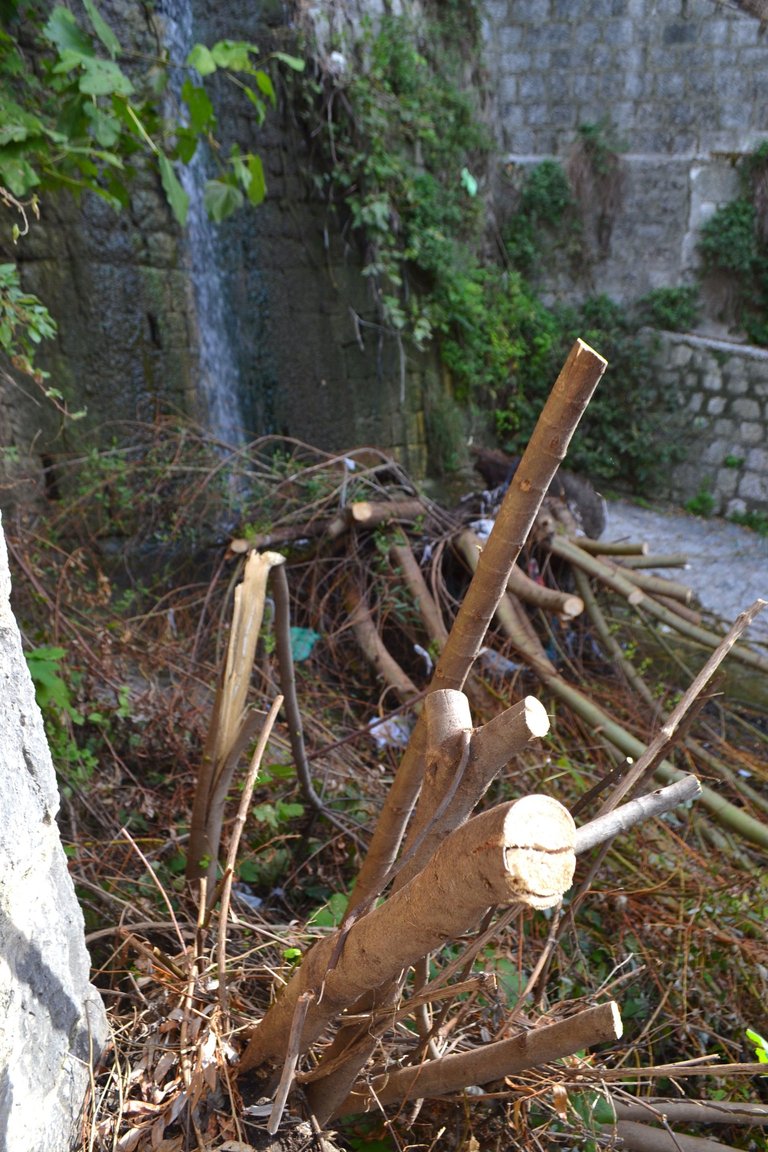
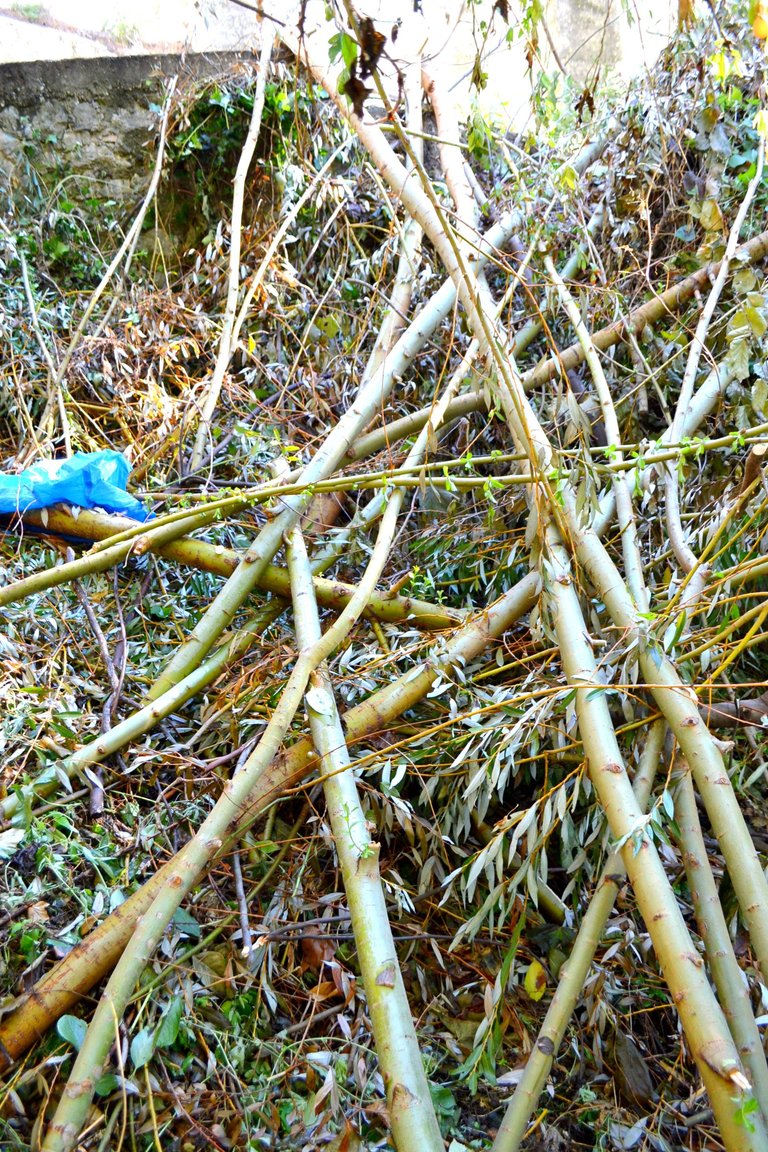
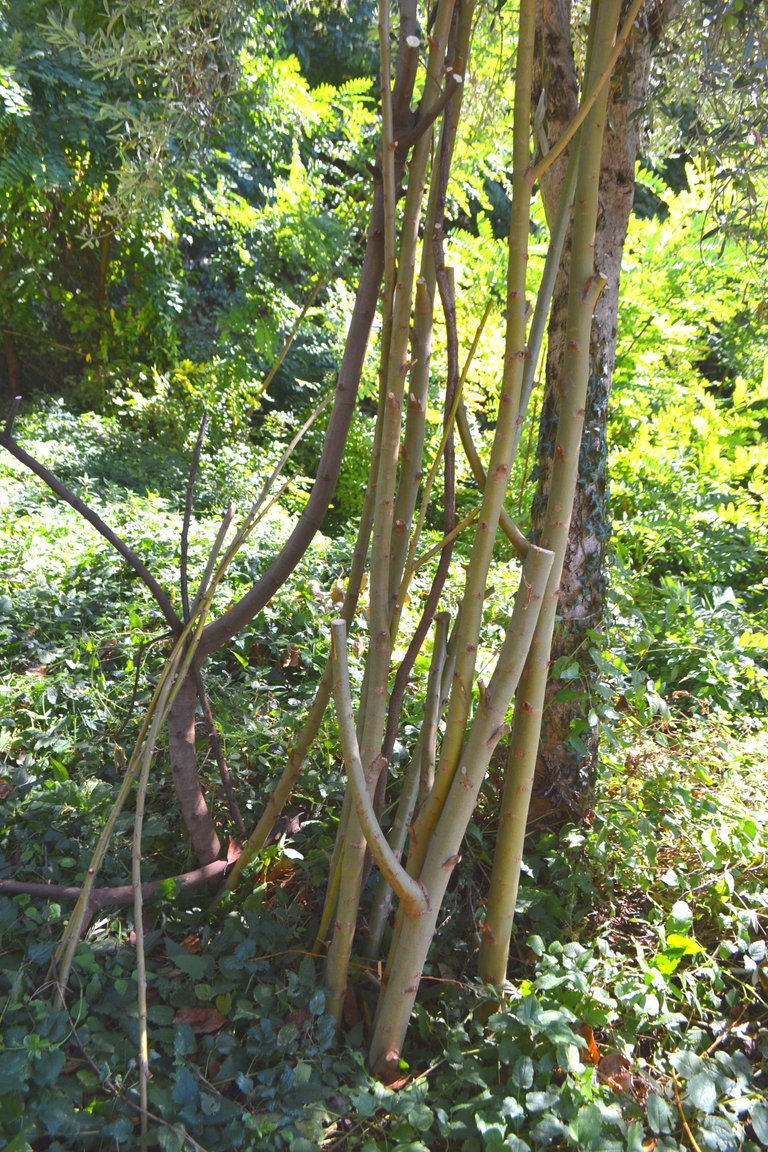
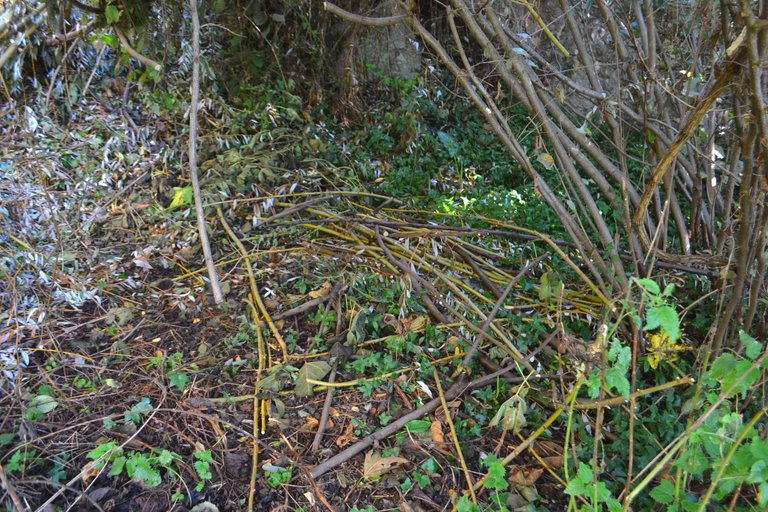
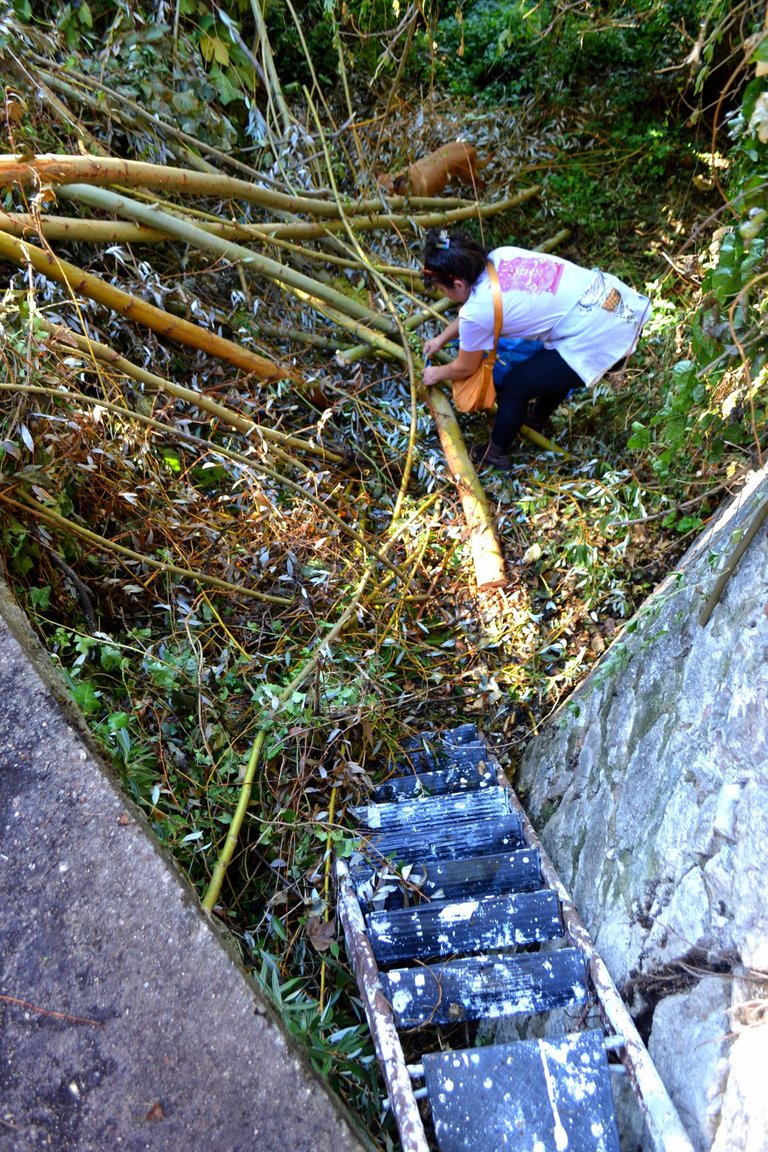
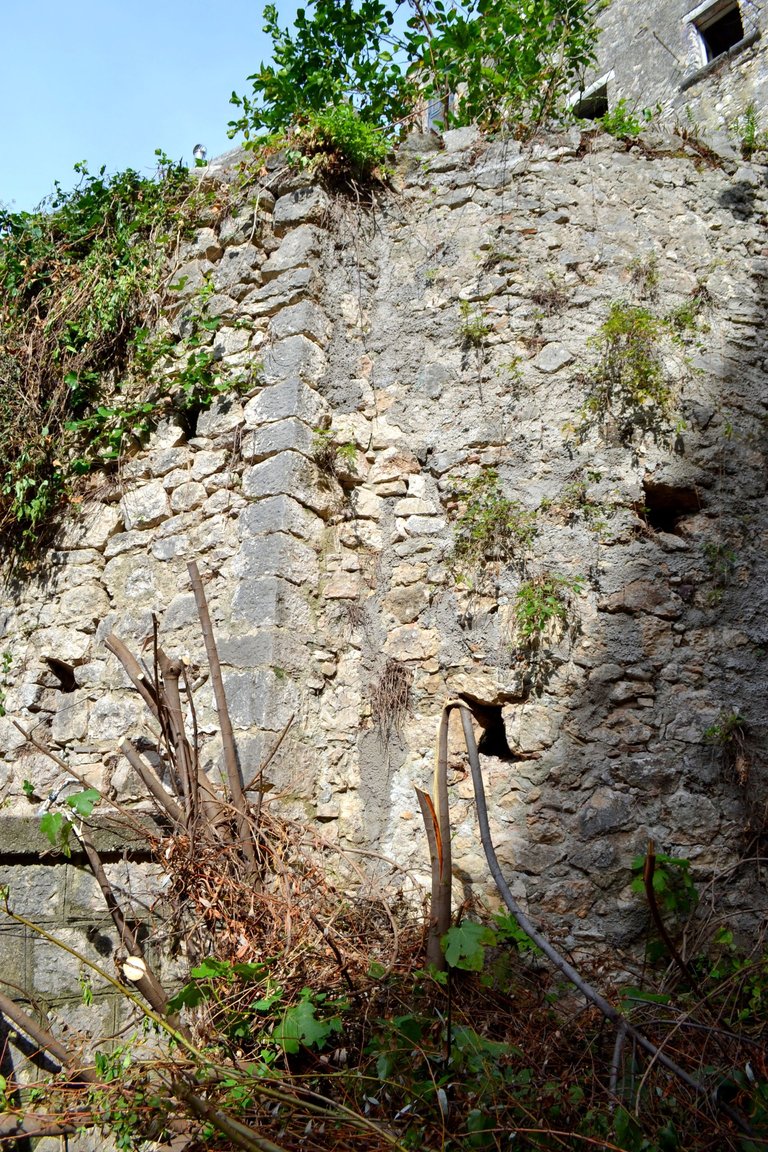
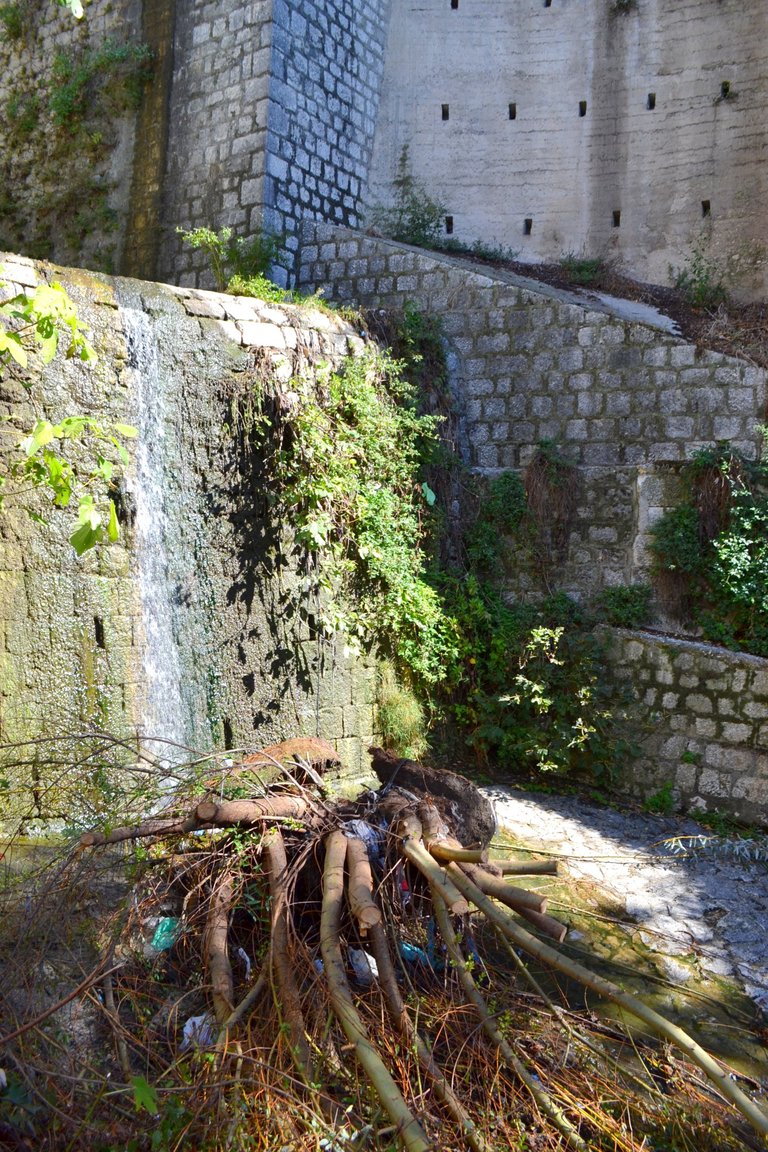
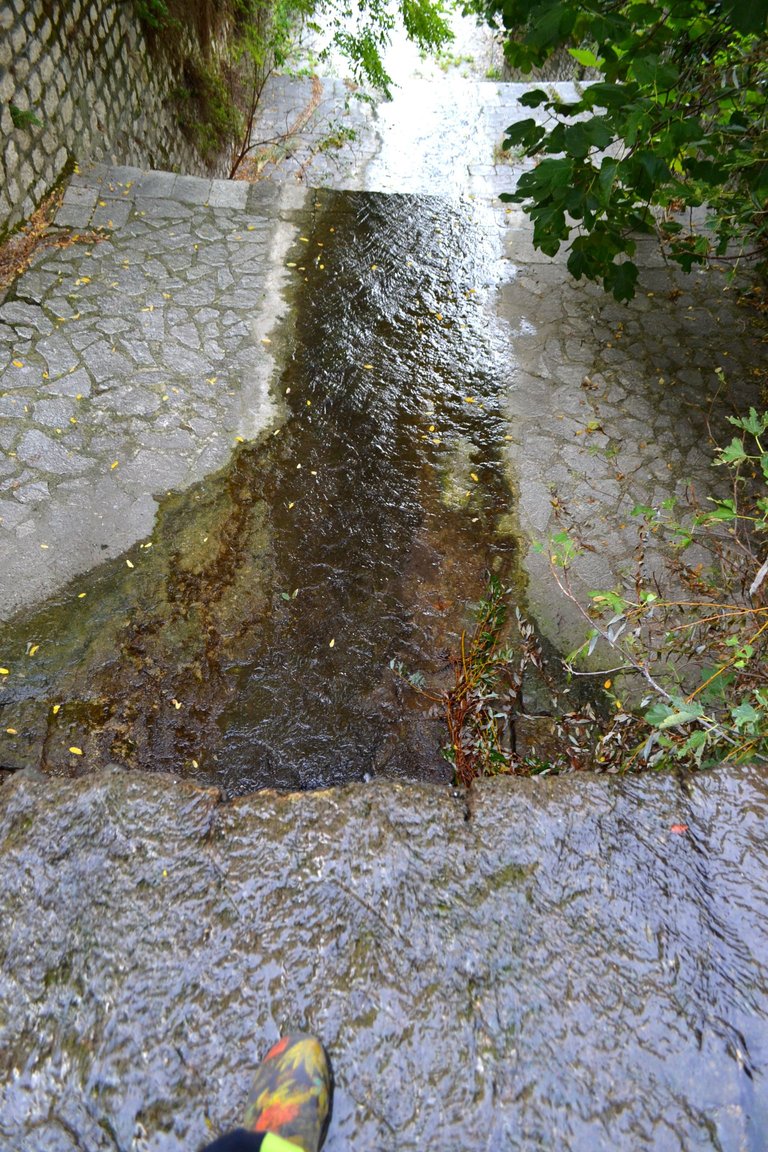
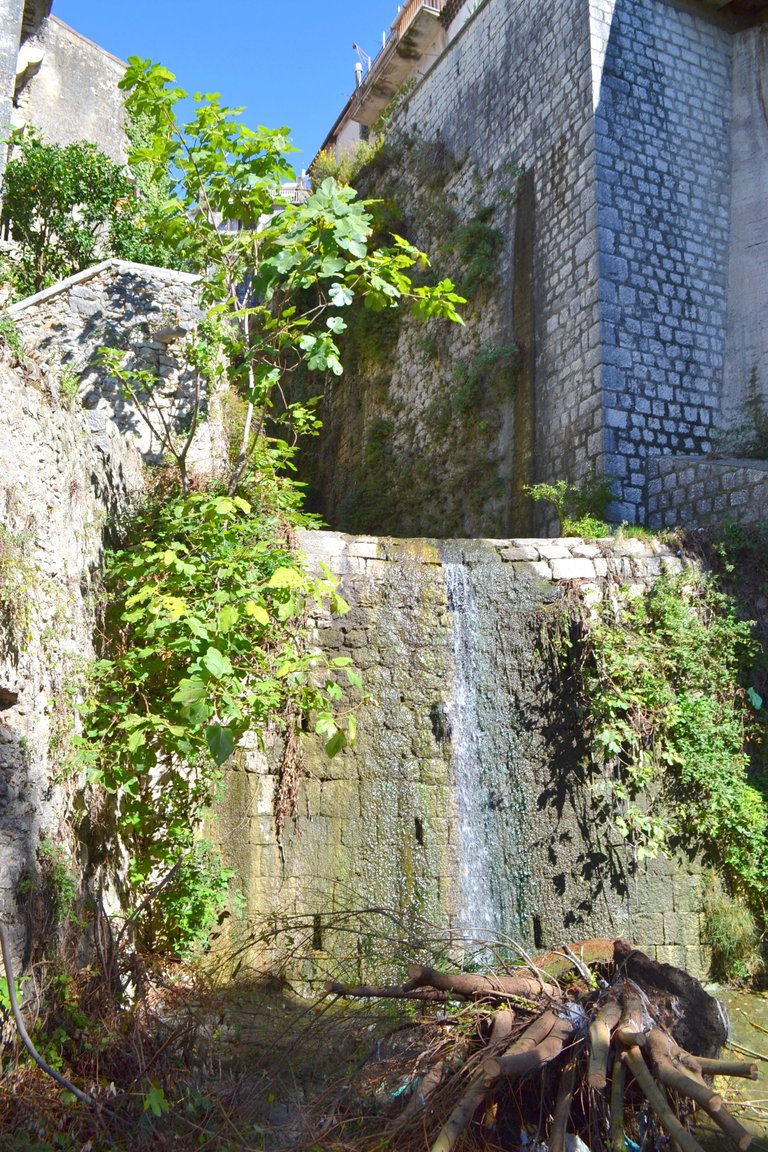
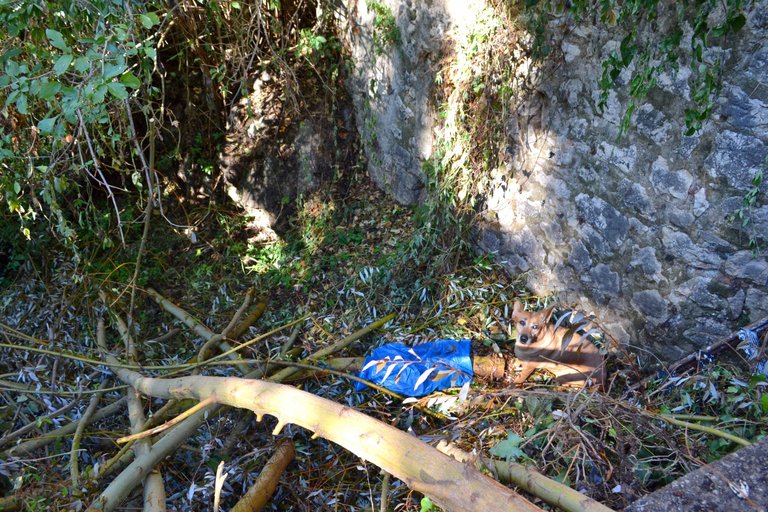
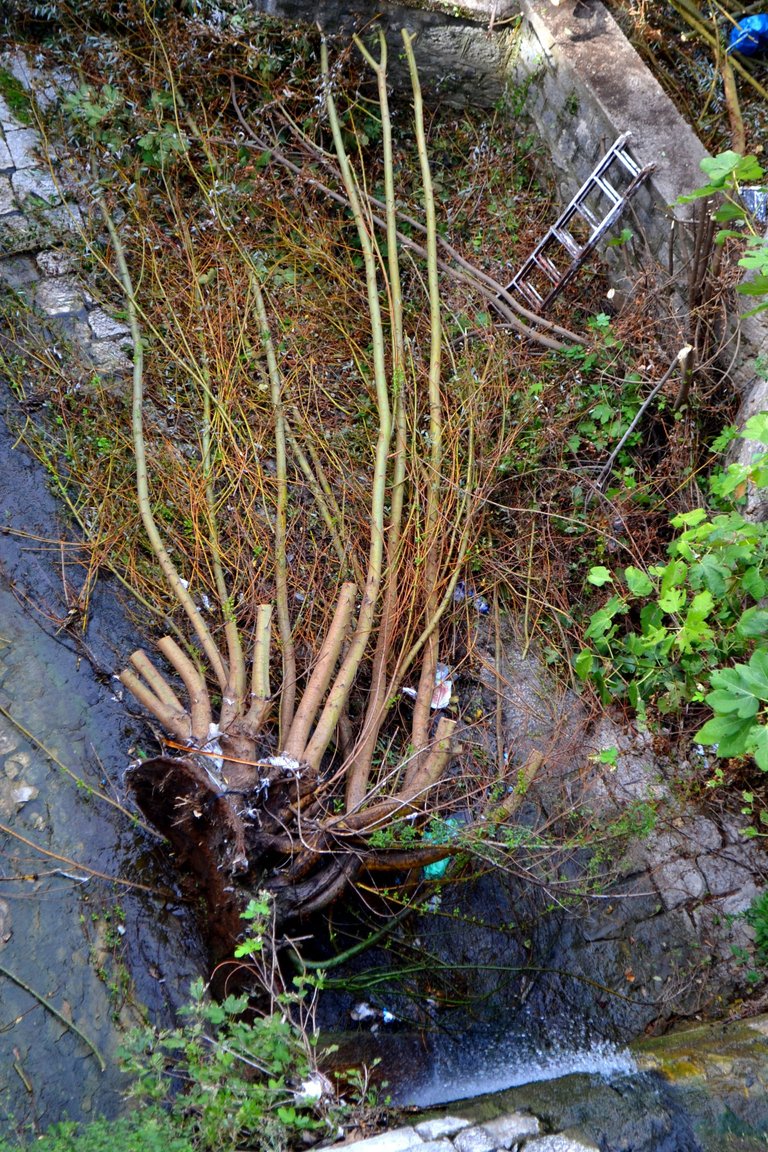
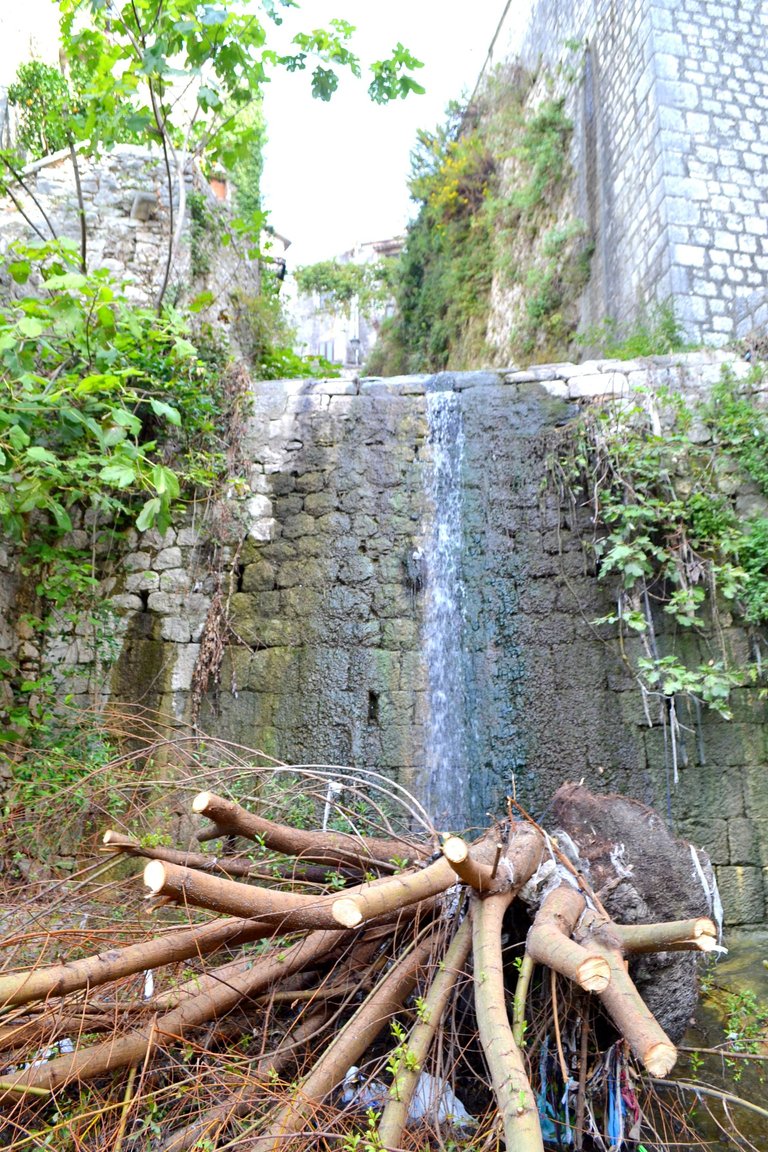
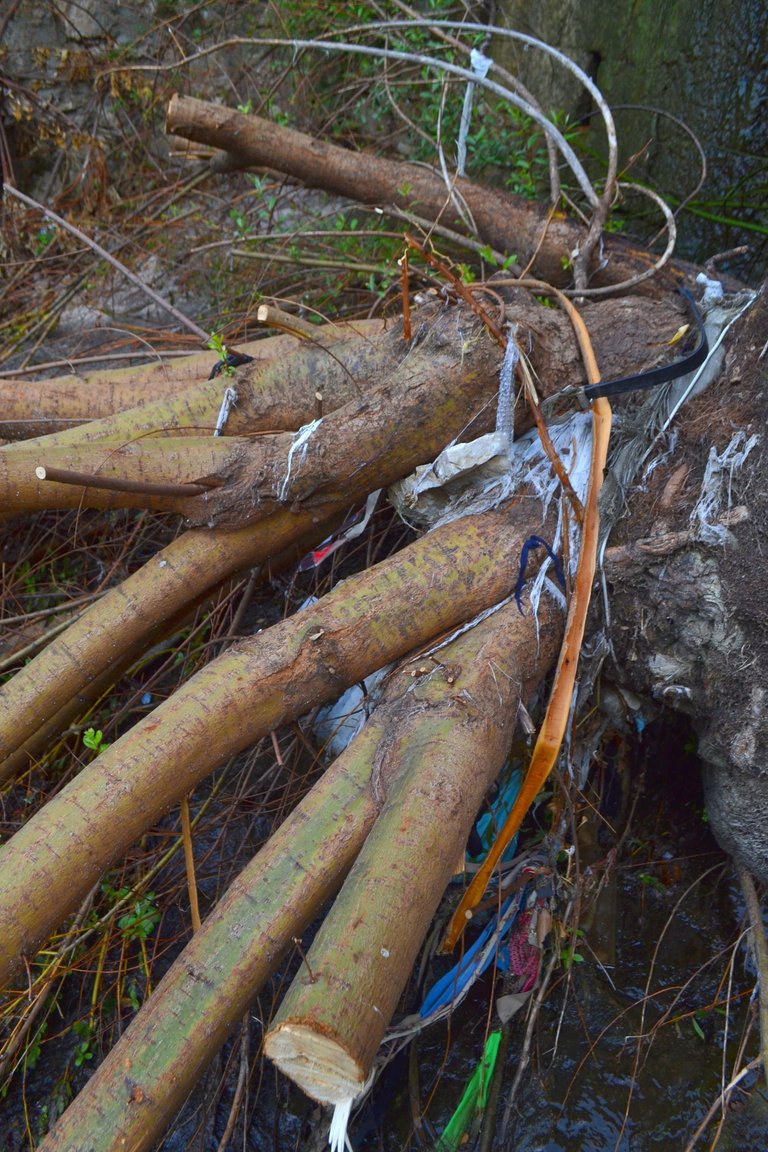

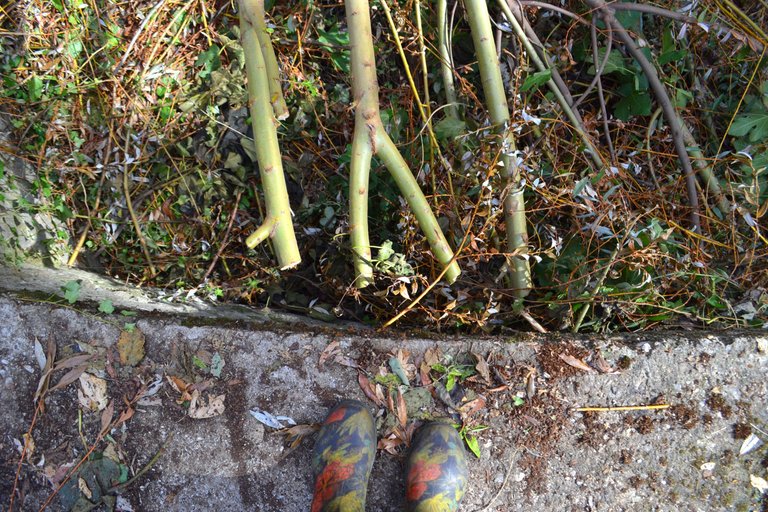
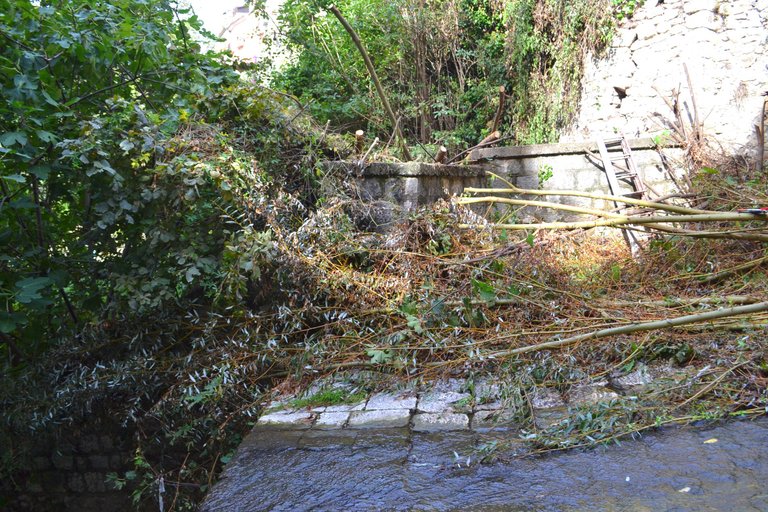

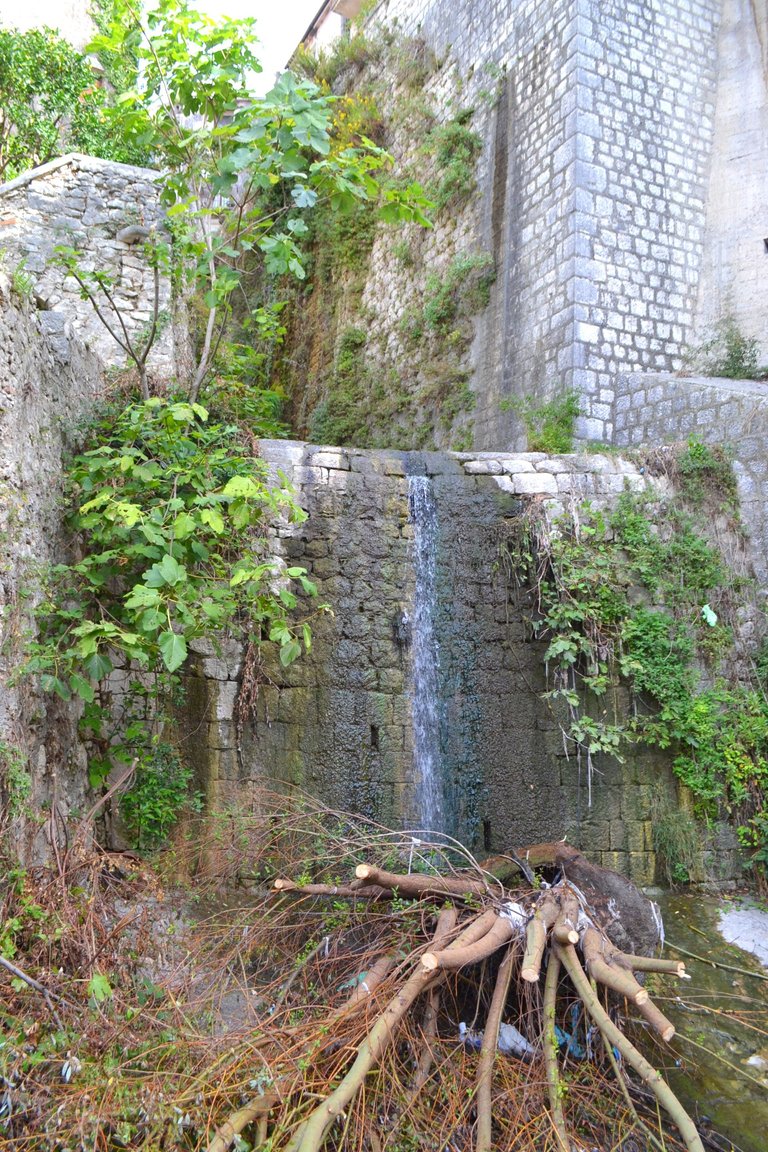
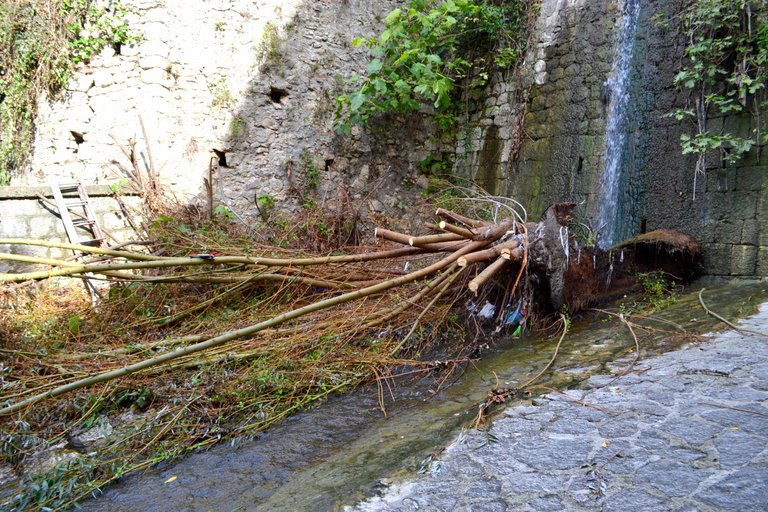
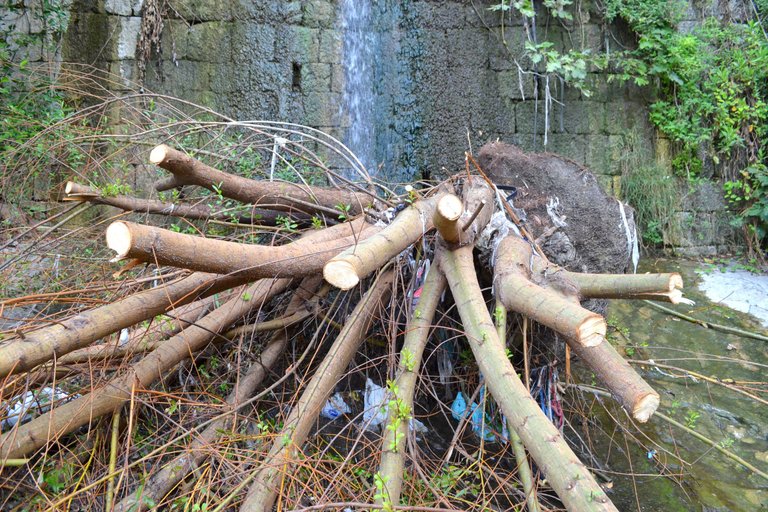
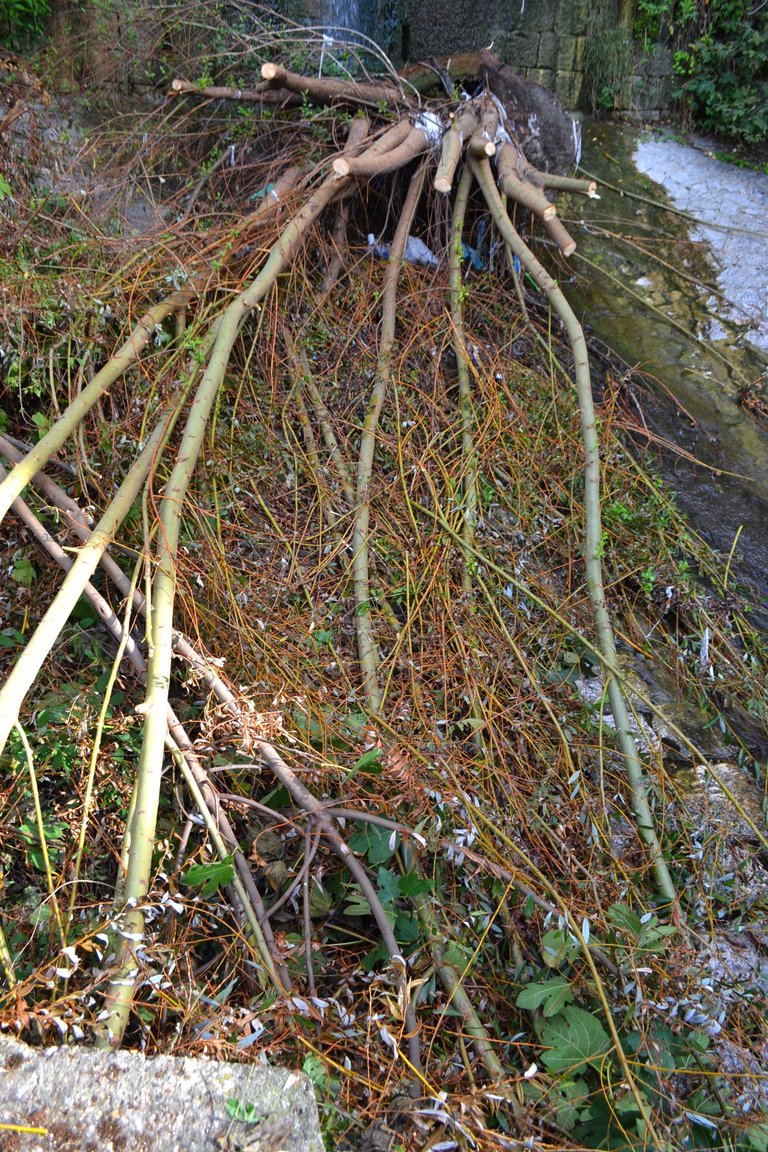

Awesome! I felt you were a busy bee, yesterday ;<)
Perhaps the bees are aware of the fact that you're active on Hive.
You're so thoroughly going to enjoy your fire later this Autumn and Winter
💚
Thank you for this fabulous comment dear Vincent - and for your message about bees' capacity to 'scan' us and remember us - that feels like what they were doing... definitely a benign energy and not threatening at all 😇
And YEY - it'll take a good time to season and be dry enough to burn, but they'll be fabulous logs, eventually!! 😍
💚
Aren't you afraid there's a big snake in the bush? very dense bushes like a forest.
@tomidiwirja... As with the bees, if I am not aggravating or stomping about insensitively, they should not have reason to retaliate... Anyways, there are only relatively small snakes here 😊
https://cast.garden/w/6sNYSVgNnYbJ5KVh3b3rZT The podcast which expounds further on this experience of taking a tree from Nature freely and Rightly. 😍